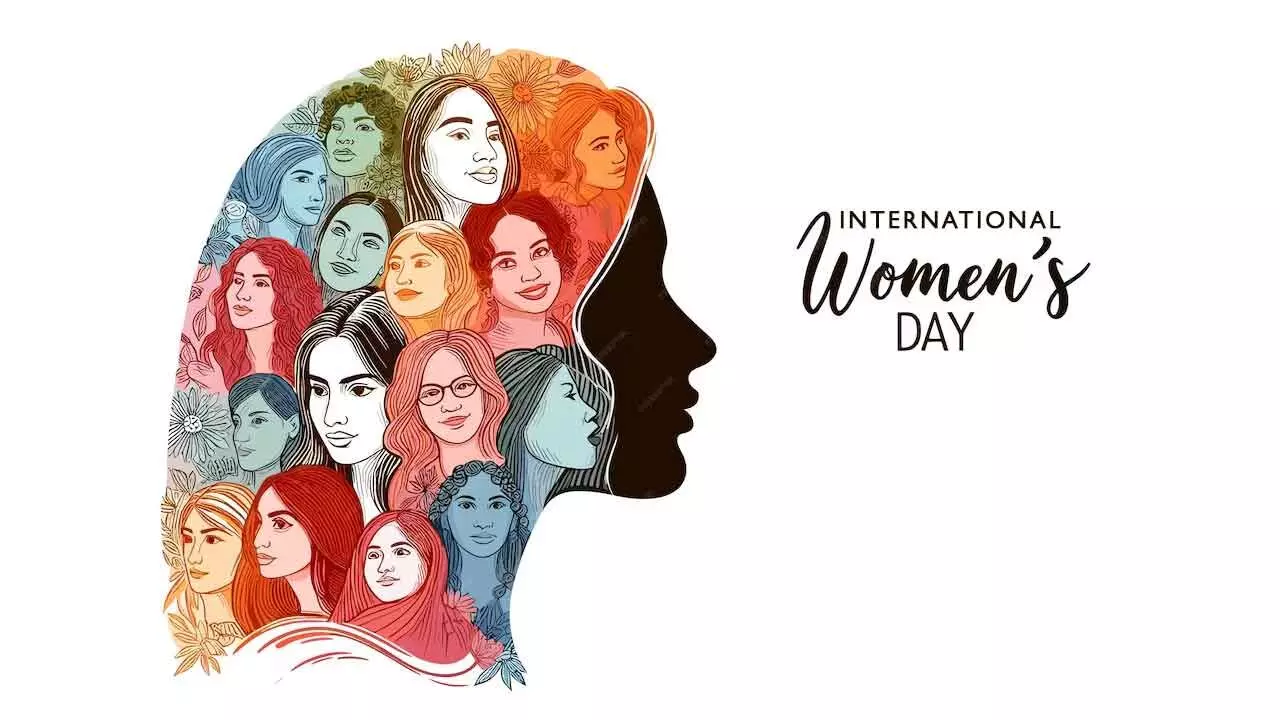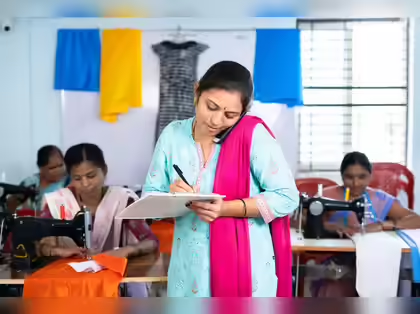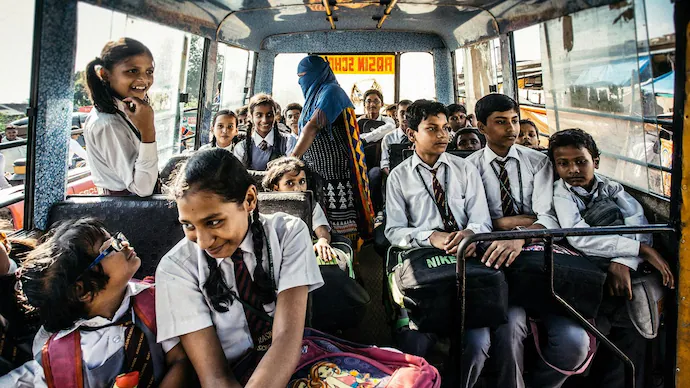- Courses
- GS Full Course 1 Year
- GS Full Course 2 Year
- GS Full Course 3 Year
- GS Full Course Till Selection
- Answer Alpha: Mains 2025 Mentorship
- MEP (Mains Enrichment Programme) Data, Facts
- Essay Target – 150+ Marks
- Online Program
- GS Recorded Course
- Polity
- Geography
- Economy
- Ancient, Medieval and Art & Culture AMAC
- Modern India, Post Independence & World History
- Environment
- Governance
- Science & Technology
- International Relations and Internal Security
- Disaster Management
- Ethics
- NCERT Current Affairs
- Indian Society and Social Issue
- NCERT- Science and Technology
- NCERT - Geography
- NCERT - Ancient History
- NCERT- World History
- NCERT Modern History
- NCERT Medieval History
- CSAT
- 5 LAYERED ARJUNA Mentorship
- Public Administration Optional
- ABOUT US
- OUR TOPPERS
- TEST SERIES
- FREE STUDY MATERIAL
- VIDEOS
- CONTACT US
International Women’s Day 2025: Empowered Women Empower the World
International Women’s Day 2025: Empowered Women Empower the World

Date: 8th March 2025
Theme: "For ALL Women and Girls: Rights. Equality. Empowerment."
- International Women’s Day, celebrated on 8th March every year, recognizes the achievements of women globally.
- The 2025 theme emphasizes equal rights, opportunities, and power for all women and girls, with a special focus on empowering youth, especially young women and girls, as catalysts for change.
- 2025 marks the 30th anniversary of the Beijing Declaration and Platform for Action, which has been a critical document for advancing women's rights globally by ensuring legal protection, access to services, and changing outdated social norms.
- In India, women’s empowerment plays a central role in national development.
- The government has implemented various policies and initiatives focusing on women’s education, health, leadership, and economic participation.
|
History:
|
Key Developments and Initiatives:
India’s Constitution guarantees gender equality:
- Article 14: Equality before the law.
- Article 15: Prohibition of discrimination on grounds of sex.
- Article 51(a)(e): Encourages citizens to renounce practices derogatory to women’s dignity.
India is a signatory to international treaties like:
- Universal Declaration of Human Rights (1948)
- International Covenant on Civil and Political Rights (ICCPR, 1966)
- Convention on the Elimination of All Forms of Discrimination Against Women (CEDAW, 1979)
- Beijing Declaration and Platform for Action (1995)
- United Nations Convention Against Corruption (2003)
- Agenda 2030 for Sustainable Development
Government Schemes for Women’s Upliftment
1. Education
Key initiatives for women’s education include:
- Right to Free and Compulsory Education Act (2009): Ensures access to education for all children.
- Beti Bachao Beti Padhao (BBBP): Aims to improve the child sex ratio and promote girls’ education.
- Samagra Shiksha Abhiyan: Focuses on improving school infrastructure and gender-sensitive facilities.
- National Education Policy (NEP) 2020: Prioritizes gender equity and inclusion in education.
- Eklavya Model Residential Schools: Promotes quality education for tribal girls.
Women’s Education Data:
- Female Gross Enrollment Ratio (GER) has surpassed Male GER since 2017-18.
- Female enrolment in higher education (2021-22): 2.07 crore, nearly 50% of the total 4.33 crore.
- The female to 100 male faculty ratio improved to 77 in 2021-22 from 63 in 2014-15.
- 42.57% of STEM students are women, with 41.9 lakh women enrolled.
STEM Initiatives:
- Vigyan Jyoti (2020): Promotes STEM education for girls in underrepresented areas.
- Overseas Fellowship Scheme: Supports women scientists for global research opportunities.
- National Digital Library, SWAYAM, and SWAYAM PRABHA: Ensure access to online learning.
- 10 lakh girl students benefitted under scholarships for STEM fields.
Skill Development:
- Skill India Mission and PMKVY provide vocational and technical training for women.
- Women Technology Parks (WTPs): Serve as hubs for training and capacity building.
2. Health and Nutrition
Improving healthcare and nutrition for women is crucial:
- Pradhan Mantri Matru Vandana Yojana (PMMVY): ₹17,362 crore disbursed to 3.81 crore women as cash incentives.
- Maternal Mortality Rate (MMR) reduced from 130 (2014-16) to 97 (2018-20) per lakh live births.
- Under-5 Mortality Rate (U5MR) reduced from 43 (2015) to 32 (2020).
- Life expectancy for women increased to 71.4 years (2016-20), expected to reach 74.7 years by 2031-36.
- Jal Jeevan Mission: Provided potable tap water to 15.4 crore households.
- Swachh Bharat Mission: Constructed 11.8 crore toilets improving sanitation.
- Poshan Abhiyaan: Strengthens maternal and child nutrition programs.
- Ujjwala Yojana: Provided 10.3 crore clean cooking gas connections.
3. Economic Empowerment and Financial Inclusion
Women’s participation in the economy is vital for growth:
- PM Jan Dhan Yojana: Opened 30.46 crore accounts, with 55% belonging to women.
- Stand-Up India Scheme: 84% of loans sanctioned were to women entrepreneurs.
- MUDRA Scheme: 69% of loans went to women-led enterprises.
- Self-Help Groups under NRLM: 10 crore women connected to 9 million SHGs.
- Bank Sakhis Model: 6,094 women banking correspondents processed transactions worth $40 million in 2020.
Women Entrepreneurs in Startups:
- 10% of funds in the Small Industries Development Bank of India (SIDBI) are reserved for women-led startups.
4. Digital and Technological Empowerment
Access to digital technology is key to women’s progress:
- PMGDISHA (Prime Minister’s Digital Saksharta Abhiyan): 60 million rural citizens trained in digital literacy.
- Common Service Centres (CSCs): 67,000 women entrepreneurs running digital service centers.
- Ayushman Bharat Digital Mission (ABDM): Bridges healthcare access through digital solutions.
- SANKALP Hubs: Women’s empowerment hubs in 742 districts across 35 States/UTs.
Financial Technology:
- Digital banking and Aadhaar-linked services ensure financial inclusion for women.
- Government e-marketplaces encourage female entrepreneurship and online businesses.
5. Safety and Protection
Women’s safety is a priority for the Indian government:
- Nirbhaya Fund: ₹11,298 crore allocated for projects focusing on women’s safety.
- One Stop Centres (OSCs): 802 centers, assisting over 1 million women.
- Emergency Response Support System (ERSS - 112): 38.34 crore calls handled.
- Fast Track Special Courts (FTSCs): 750 operational courts, with 408 exclusively for POCSO cases.
- Cyber Crime Helpline (1930) and cyber forensic labs for women’s digital safety.
- Safe City Projects: Implemented in 8 cities to enhance women’s safety.
- 14,658 Women Help Desks in police stations, 13,743 headed by women.
Key Legal Protections:
- Criminal Law (Amendment) Act, 2018: Enhanced penalties for crimes against women.
- Protection of Women from Domestic Violence Act, 2005.
- Sexual Harassment of Women at Workplace Act, 2013.
- POCSO Act, 2012: Strengthens laws against child abuse.
- Ban on Triple Talaq (2019): Criminalized instant divorce practices.
- Dowry Prohibition Act, 1961: Penalizes dowry-related offenses.
- Prohibition of Child Marriage Act, 2006: Protects minors from forced marriages.
6. Legislative and Institutional Reforms
- Bharatiya Nyaya Sanhita (BNS), 2023: Strengthens gender justice provisions.
- 33% reservation for women in select Central Armed Police Forces.
- Nari Adalat: Piloted in 50 Gram Panchayats each in Assam and J&K, expanding further.
Women’s Education in Pre-Independence India
- In pre-independence India, social reformers focused on improving women’s education. But education for women was not meant to change their lives completely.
- The goal was to teach women how to be good wives and mothers. Subjects like cooking, needlework, and hygiene were part of their learning.
- This education aimed to shape women’s role in society, but it did not challenge traditional gender roles.
- Women were seen as keepers of the nation’s culture. Their education was meant to help them support the freedom movement.
- The ideal woman was one who combined domestic skills with modern education. However, the rate of female enrollment in schools varied in different parts of India.
- Areas like Madras (now Chennai) and Bengal had more girls in schools due to the efforts of social reformers and missionaries.
Female Leaders Who Fought for Education
- Many women fought for education and equal rights in pre-independence India.
- They came from different backgrounds, castes, and religions.
- These women paved the way for future generations. Some of the most important women in this fight were:
Savitribai Phule
- Savitribai Phule was a Dalit woman who fought against the caste system and worked for girls’ education.
- In 1848, she and her husband Jyotirao Phule opened the first school for girls in Pune. The school was open to girls from all castes.
- Despite facing hatred and violence, including being pelted with stones, Savitribai never gave up on her mission.
Fatima Sheikh and Pandita Ramabai
- Fatima Sheikh, a Muslim woman educator, worked with the Phules in Pune to promote girls' education.
- Sadly, not much is known about her, but her contributions were important.
- Pandita Ramabai, from Mangalore, was also a strong advocate for women’s education.
- She worked to improve the lives of widows and fought against child marriage.
Chandraprabha Saikiani
- Chandraprabha Saikiani was from Assam and worked hard for women’s education. In 1925, she spoke at a public gathering where men and women were separated.
- She urged women to sit alongside men, showing her support for equality.
- At just 13 years old, she started a school for girls and later founded the Assam Pradeshik Mahila Samiti in 1926.
Begum Rokeya Sakhawat Hossain
- Begum Rokeya was a writer and social worker who supported Muslim women’s education.
- She started schools for Muslim girls in Bhagalpur (1909) and Kolkata (1911).
- Through her work, she inspired many women to pursue education.
Sarala Ray
- Sarala Ray, from Bengal, founded the Gokhale Memorial Girls’ School in 1920.
- The school focused on teaching girls multiple languages, including Hindi, Bengali, and English.
- She later established the Gokhale Memorial Girls’ College in 1938, further promoting women’s education.
Challenges Faced by Women in Education
These women faced many challenges. Some of the main obstacles included:
- Resistance from Society: Many parents didn’t want to send their daughters to school due to social beliefs about menstruation and marriage.
- The Purdah System: The purdah system limited the movement of Muslim and upper-caste women, making it hard for them to access education.
- Caste and Religion: Women like Savitribai and Begum Rokeya faced resistance due to their caste or religion.
- Lack of Facilities: Many schools lacked proper sanitation, which made it difficult for girls to attend regularly.
Despite these struggles, these women showed great courage and determination. They worked to break social barriers and laid the foundation for women’s education in India.
Legacy and Ongoing Struggles
The legacy of these women still matters today. Though women’s education has improved, challenges remain:
- Lower Enrollment and Retention: In many areas, fewer girls enroll and stay in school.
- Harassment: Women continue to face violence and harassment in schools and universities.
However, the work of these pioneers continues to inspire change. Their efforts remind us that education is a powerful tool for empowerment and breaking barriers.



